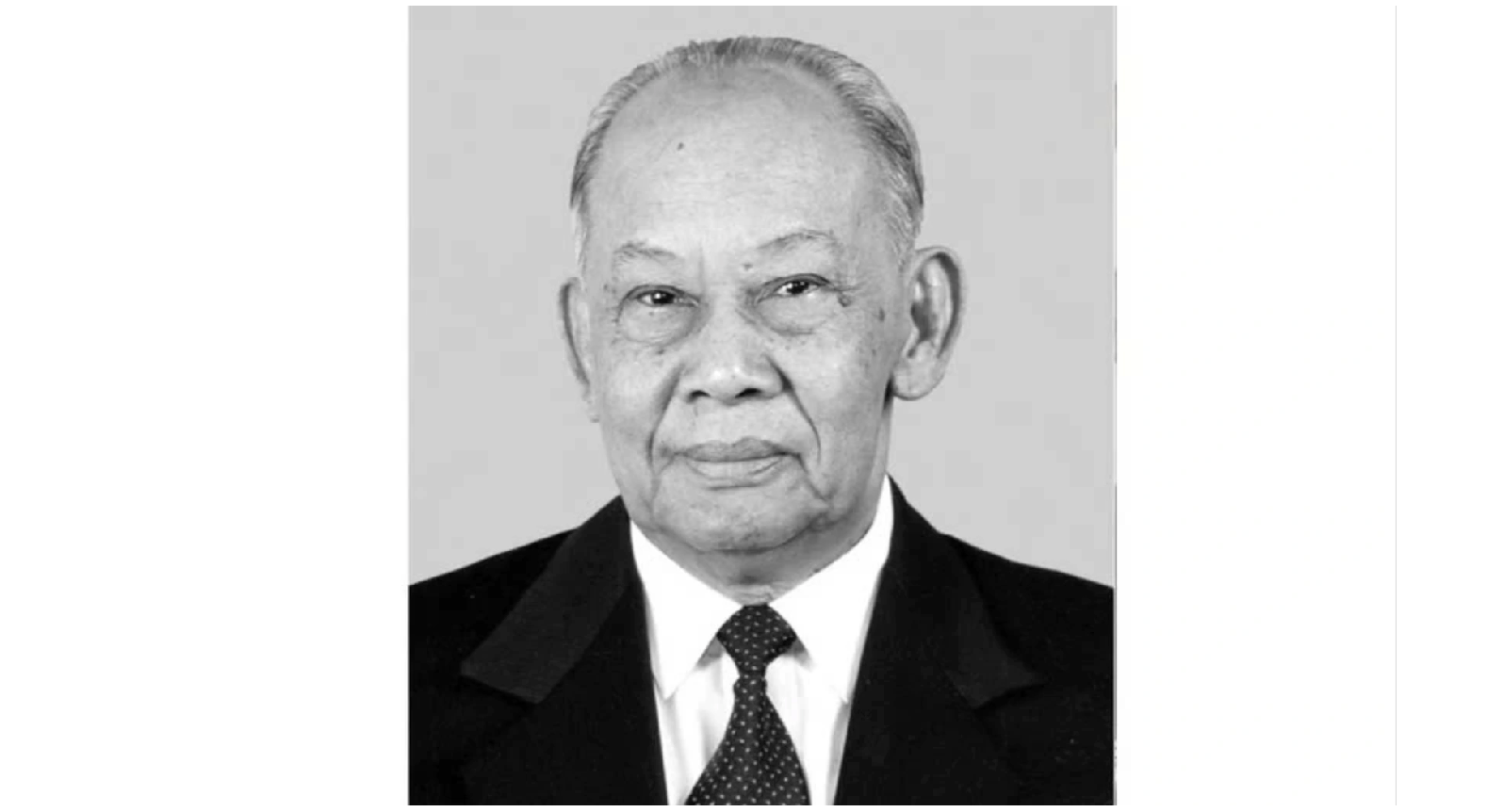Through many historical arrangements, the local government apparatus of our country has gradually improved its efficiency, creating convenience in handling administrative procedures for people and businesses. However, the cumbersome and overlapping functions and tasks have not been completely overcome, and the State's resources have not yet been optimized with the 3-level local government model.
The image of Matryoshka dolls (traditional Russian dolls) was used by Associate Professor Dr. Huynh Van Thoi, former acting director of the Academy of Public Administration and Management in Ho Chi Minh City, as a metaphor for the administrative levels of our country before the abolition of the district level and the merger of provinces and communes. Matryoshka dolls usually consist of a set of many hollow dolls, gradually decreasing in size, nested inside each other.
Associate Professor, Dr. Huynh Van Thoi, former Acting Director of the Academy of Public Administration and Management in Ho Chi Minh City (Photo: Q.Huy).
"This image is similar to local government levels from large to small, only different in size. Local government levels are like the central level in miniature, taking territory as the sole basis for establishing administrative agencies, including vertical agencies and judicial agencies," Associate Professor Dr. Huynh Van Thoi analyzed.
The limitations of the government organization model make it impossible to thoroughly implement administrative reform, and the effectiveness of streamlining has not been synchronized between levels. Therefore, eliminating the intermediate administrative level (district level) and merging some provincial administrative units is an inevitable requirement at this time. This is also a trend that many countries in the world have recognized, overcome and achieved many positive results.
Revolutions in the organization of the apparatus
Sharing international experience in the arrangement of local government apparatus, Associate Professor Dr. Vuong Duc Hoang Quan cited the Greek Kallikratis program that took place in early 2011. At that time, the Greek Government merged more than 1,000 small administrative units into 325 cities and 13 administrative regions with the goal of improving the scale of management and operational efficiency of the apparatus.
After that reform, the Kallikratis program helped Greece save about 500 million euros per year for the budget. Local fiscal capacity and the ability to provide public services were also significantly improved.
"The Kallikratis program has left us with many valuable lessons about carefully preparing institutions, infrastructure, human resources and communications before implementing major reforms. Reallocating resources, training and fostering managers suitable for the new scale is also a complex task, requiring a long-term strategy and high consensus in society," Associate Professor, Dr. Vuong Duc Hoang Quan analyzed.
Associate Professor, Dr. Vuong Duc Hoang Quan, Senior Lecturer, Ho Chi Minh City Open University (Photo: Q.Huy).
Since World War II, Germany has also been a country that has continuously implemented administrative reforms. The local government system in Germany is organized into two main levels: district and urban, with clear decentralization, giving strong autonomy to each level.
"A prominent experience of Germany is the establishment of regional administrative centers to optimize resources and increase coordination between localities. The German government also invests heavily in digital infrastructure, developing a national public service portal with the ability to connect and synchronize," Associate Professor, Dr. Vuong Duc Hoang Quan shared.
The expert said that Germany's experience shows that reforming the local government apparatus is not simply about reorganization and restructuring, but also about modernization, investing in digital infrastructure, encouraging innovation, and promoting regional connectivity.
In 2007, Denmark also underwent one of the most important local government reforms in its history. The country stands out for its carefully prepared administrative reform strategy, publicly announcing its multi-year plan for the whole society to study, prepare, and adapt.
Digital transformation and strong application of science and technology are common points in administrative reform of developed countries (Photo: Q.Huy).
After the reform, Denmark formed large-scale megacities with strong financial autonomy and the ability to make their own policies. Similar to Germany's reform, Denmark's restructuring process is associated with technology investment and digitalization of many fields to serve people and businesses.
Associate Professor, Dr. Vuong Duc Hoang Quan said that the arrangement and streamlining of local government apparatus and the merger of provinces and cities are urgent requirements for our country in the context of rapid development and deep integration with the world. With international experience and domestic reality, the process of streamlining the apparatus is not simply about reducing the number of administrative agencies.
Streamlining the local government apparatus will only be truly effective when implemented in conjunction with digital transformation, modernizing governance methods, and developing a team of capable and strategically visionary cadres and leaders.
Strong decentralization needed
Citing examples from other countries, Dr. Nguyen Minh Nhut, Vice Chairman of the Culture and Society Committee of the Ho Chi Minh City People's Council, said that the United States is a pioneer in building an urban government without intermediate levels. States and large cities have strong autonomy.
The organizational structure of the urban government model in the US includes the Federal level which is responsible for establishing a general legal framework; the states have the right to regulate laws related to urban areas; the urban government level operates independently and has its own budget.
"Big cities like New York and Los Angeles directly manage public services such as transportation, security, and education without going through the district level. This will increase administrative efficiency," informed Dr. Nguyen Minh Nhut.
Dr. Nguyen Minh Nhut, Deputy Head of Culture and Society Committee of Ho Chi Minh City People's Council (Photo: Q.Huy).
Japan is also a country that applies the "designated city" model, allowing large cities to directly manage public services without intermediaries. This model helps reduce financial burdens and increase autonomy for urban governments.
The urban government model without intermediate levels in Japan consists of the central government being responsible for establishing laws and providing financial support; the urban government level will decide on economic development policies, infrastructure, education; the wards at the bottom level only perform basic administrative tasks.
France is also a country with an urban government model without intermediate levels and strong decentralization. Large cities are given a high degree of autonomy, can issue their own policies, and are flexible in urban policy planning and budget management.
According to Dr. Nguyen Minh Nhut, eliminating intermediate levels in urban government is a reform trend that is suitable for the current context of our country. Experience from other countries shows that for this model to be successful, Vietnam needs strong reforms in the legal framework, giving greater autonomy to localities.
In addition, the administrative apparatus needs to be reformed in a streamlined manner to avoid overlap. Along with that, the issue of power control and the supervisory role of the People's Council need to be enhanced.
Along with not organizing intermediate levels of government, decentralization and delegation of power to localities needs to be promoted (Photo: Nam Anh).
Sharing the same view, Associate Professor Dr. Huynh Van Thoi said that when eliminating intermediate levels of government, promoting decentralization and delegation of power is an inevitable requirement. This is a key factor in the success of the upcoming arrangement and merger of administrative units.
"This is something that cannot be delayed, but we also need to avoid haste and subjectivity. The two viewpoints to avoid when implementing decentralization and delegation of power are fear that local authorities do not have enough capacity to implement it and implementing it widely and massively without assessing the ability and conditions for implementation," Associate Professor, Dr. Huynh Van Thoi stated.
The expert emphasized that promoting decentralization and delegation of power does not reduce the role of the Central Government but rather helps the Central Government to be strong enough to develop policies and laws and solve problems at the strategic level. Local governments also promote autonomy, self-determination and self-responsibility.
Dantri.com.vn
Source: https://dantri.com.vn/xa-hoi/bai-hoc-bo-cap-chinh-quyen-trung-gian-tu-cac-nuoc-phat-trien-20250328202802283.htm









![[Photo] Moment of love: Myanmar people are moved to thank Vietnamese soldiers](https://vstatic.vietnam.vn/vietnam/resource/IMAGE/2025/4/3/9b2e07196eb14aa5aacb1bc9e067ae6f)


![[Photo] General Secretary To Lam receives Japanese Ambassador to Vietnam Ito Naoki](https://vstatic.vietnam.vn/vietnam/resource/IMAGE/2025/4/3/3a5d233bc09d4928ac9bfed97674be98)
![[Photo] Special relics at the Vietnam Military History Museum associated with the heroic April 30th](https://vstatic.vietnam.vn/vietnam/resource/IMAGE/2025/4/3/a49d65b17b804e398de42bc2caba8368)






















































































Comment (0)